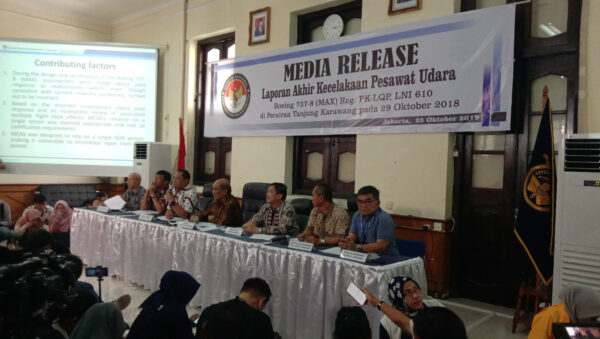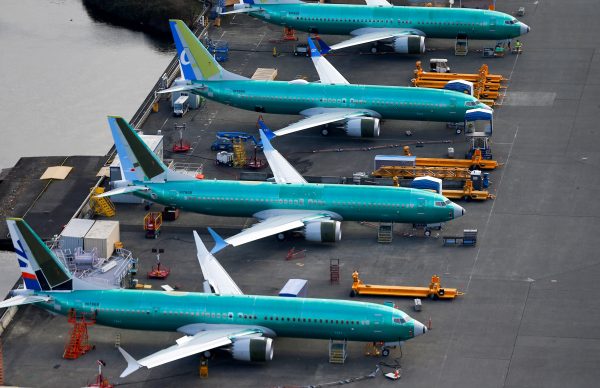Boeing, acting without adequate oversight from U.S. regulators, failed to grasp risks in the design of cockpit software on its 737 MAX airliner, sowing the seeds for a Lion Air crash that also involved errors by airline workers and crew, Indonesian investigators found.
The fatal crash, followed within five months by another at Ethiopian Airlines, led to a global grounding of the Boeing 737 MAX and a crisis for the worlds biggest planemaker, which this week ousted its commercial airplanes chief.
In its final report into the Oct. 29, 2018, Lion Air crash that killed all 189 people on board, Indonesia made recommendations to Boeing, the airline, the U.S. Federal Aviation Administration (FAA) and other agencies.
Indonesian regulators criticized the design of the anti-stall system known as MCAS, which automatically pushed the planes nose down, leaving pilots fighting for control.
“The design and certification of the MCAS did not adequately consider the likelihood of loss of control of the aircraft,” the report said.
Boeing has been working on a redesign of MCAS although it has yet to certified by the FAA.
The report also said “deficiencies” in the flight crews communication and manual control of the aircraft contributed to the crash, as did alerts and distractions in the cockpit.
The accident had been caused by a complex chain of events, Indonesian air accident investigator Nurcahyo Utomo told reporters at a news conference, repeatedly declining to be drawn on providing a single dominant cause.
“From what we know, there are nine things that contributed to this accident,” he said. “If one of the nine hadnt occurred, maybe the accident wouldnt have occurred.”

During the flight, the first officer was unable to quickly identify a checklist in a handbook or perform tasks he should have had memorised, it said, adding that he had also performed poorly in training exercises.
The captain did not properly brief the first officer when handing over control just before the plane entered a fatal dive, it also said.
The report noted that according to the cockpit voice recorder, the first officer told the captain the flight was not in his initial schedule and he had been called at 4 a.m. to be informed of the revision, while the captain said he had the flu.
A critical angle of attack (AOA) sensor providing data to the MCAS anti-stall system had been miscalibrated by Florida-based Xtra Aerospace without the recommended equipment, the report said, and there were strong indications that it was not tested during installation by Lion Air maintenance staff.
The FAA, also faulted by the report for its oversight of Xtra, formally revoked the maintenance firms repair station certificate following the reports publication.
Xtra responded in a statement that it had been cooperating closely with the FAA “and though we have reached a settlement with the FAA, we respectfully disagree with the agencys findings.”
The company noted the FAA action was separate from the Indonesias “investigation and report of the Lion Air Boeing 737 Max accident and is not an indication that Xtra was responsible for the accident.”
Lion Air should have grounded the jet following faults on earlier flights, the investigators also found, adding that 31 pages were missing from the airlines October maintenance logs.
A Lion Air spokesman said the crash was an “unthinkable tragedy” and it was essential to take immediate corrective actions to ensure a similar accident never occurred again.
Boeing said in a statement that it was addressing Indonesias safety recommendations and taking actions to enhance the safety of the 737 MAX. Saying it mourned with Lion Air, the manufacturer promised to learn from the crash.


The FAA said it welcomed the reports recommendations and would carefully consider them and all others as it continued to review Boeings proposed changes to the 737 MAX.
Indonesia may require pilots receive simulator training before the plane returns to service as earlier computer-based training covering differences between the 737 MAX and prior 737 NG model was insufficient, DireRead More – Source







